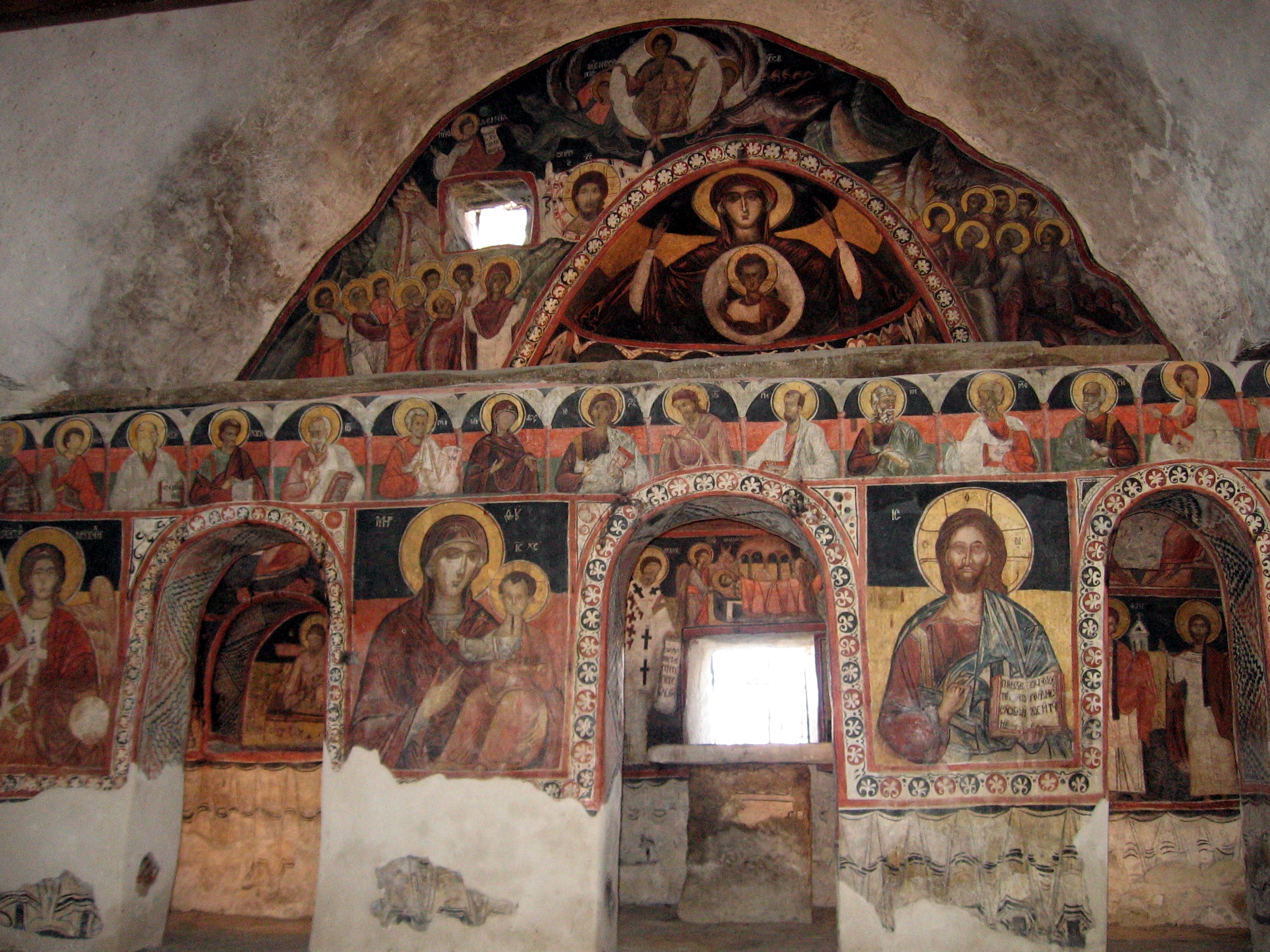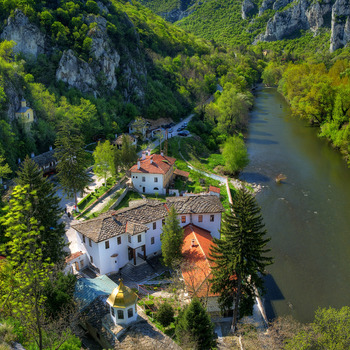Church of St. Nicholas Tsarevets village
Overview
It is a one-nave, one-apse building, without a narthex, with a masonry iconostasis. The apse and the two side niches, which act as a diaconicon and a prosthesis, are shaped like a fepid. The roof is a semi-cylindrical vault under a gable roof.
The church is built of quarry stones of white mortar; in places, mainly on the west façade, wooden santrachi can be seen. Cut (processed) stones, used secondarily, can also be seen in the construction. On the west façade, south half, there is a well-smoothed stone with irregular contours, on which there is an incised inscription.
At the northwest corner you can see the collapse of a wall, which was structurally connected with the construction of the church. It probably refers to a masonry arch (now extinct) on which a metal or wooden eyelid is hung. There is a similar preserved arch in a church in the village of Kunino and in other places in Bulgaria.
During development and public works in the center of the village and around the new church (15-20 m. Southwest of the old one) graves were found more than once. From them originate mainly ornaments dating to the necropolis around the church "St. Nicholas" from the Middle Ages - XII-XIV centuries.
The church itself, as an architectural style and construction, can be attributed to the end of the fourteenth and the beginning of the fifteenth century. The church was fortified and completed in 1747. (inscription on the top building stone of the door).
In 1844 the Tryavna master-carver Angel Simeonov made a wood-carved iconostasis, and the local icon-painter teacher Petko painted the church icons. "In a separate region of Vratsa, which runs along the lines of the villages Tipchenitsa, Staro Selo, Tsarevets and Kunino, in the second half of the eighteenth and early nineteenth century worked painter Petko Tanov (Daskalov), studied in Tryavna. , with fresh perceptions, he brings the icon closer to the perceptions of the mass spectator "- the art critic Raina Savova-Kasabova writes about him.
Along the western iconostasis are preserved waist-length images of the Mother of God, Archangel Michael and others. The stylistic features reveal a late, not very masterful work. There is also a mural layer in the altar part.
It is located in the center of the village, in the yard of the new functioning church, where old tombstones from the Revival are kept. Easily accessible; Restoration and conservation of the site has been carried out. In very good condition.
Recommended
- Kaleto Archaeological Complex
- Varbeshnitsa Dam
- Rock paintings - the village of Tsarevets
- The caves of the monks
- Tsarevetski Rock Monastery
- Baba Iliytsa House-Museum and others


 Bulgarian
Bulgarian Romanian
Romanian

